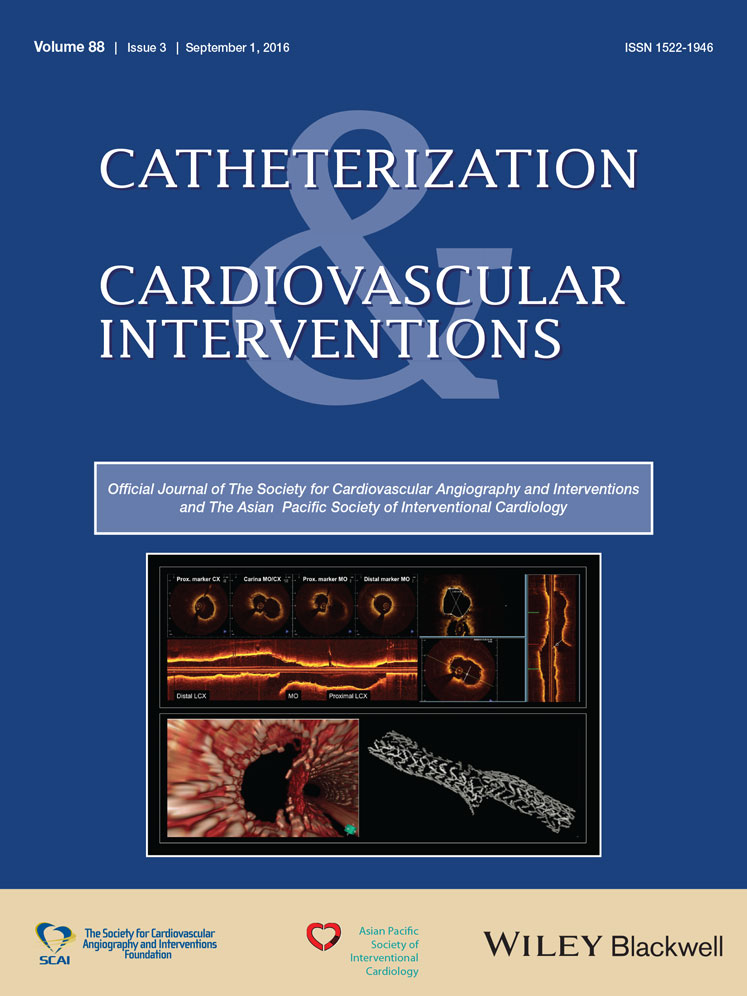Cracking a tricuspid perimount bioprosthesis to optimize a second transcatheter sapien valve-in-valve placement
Institution at which work was performed: University Hospitals Leuven, Herestraat 49, B 3000, Leuven, Belgium
Conflict of interest: Nothing to report.
Abstract
Bioprosthetic valves degenerate over time. Transcatheter valve-in-valve procedures have become an attractive alternative to surgery. However, every valve increasingly diminishes the diameter of the valvar orifice. We report a 12-year-old female who had a previous transcatheter tricuspid valve-in-valve procedure; cracking the ring of a Carpentier Edwards Perimount valve by means of an ultrahigh pressure balloon allowed implantation of a further larger percutaneous valve. The advantage of this novel approach permits enlarging the inner valve diameter and may facilitate future interventions and prolong time to surgery. © 2016 Wiley Periodicals, Inc.




